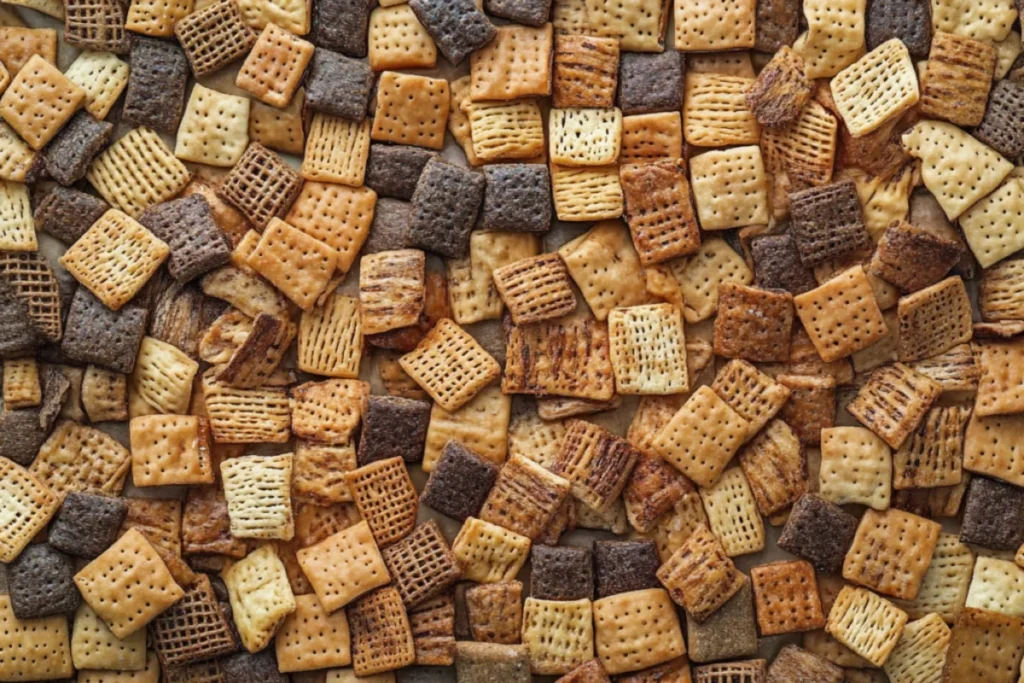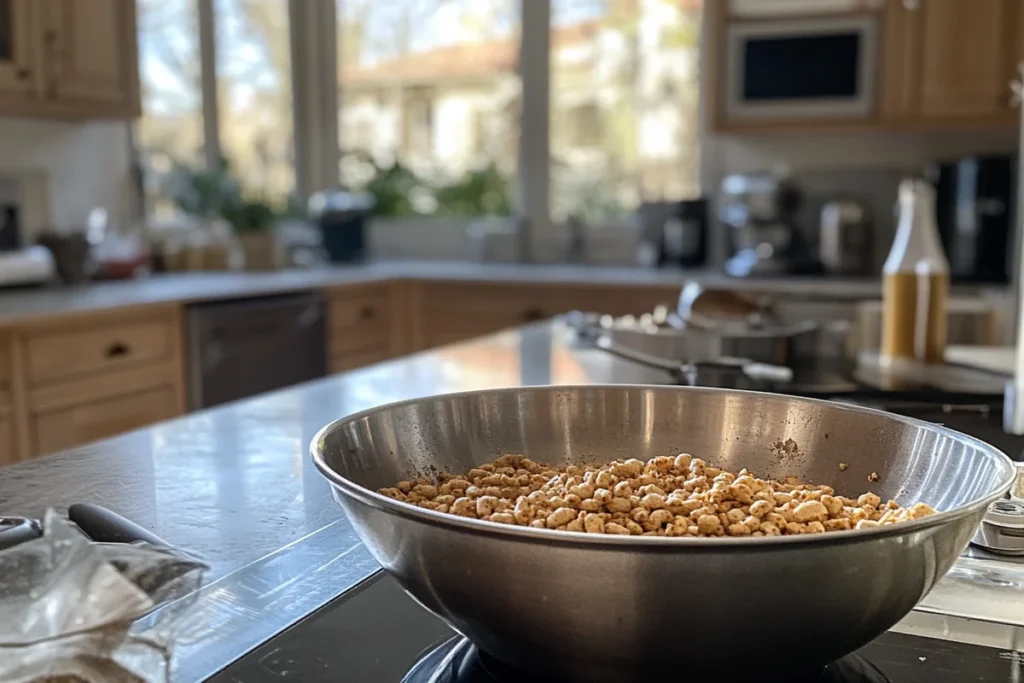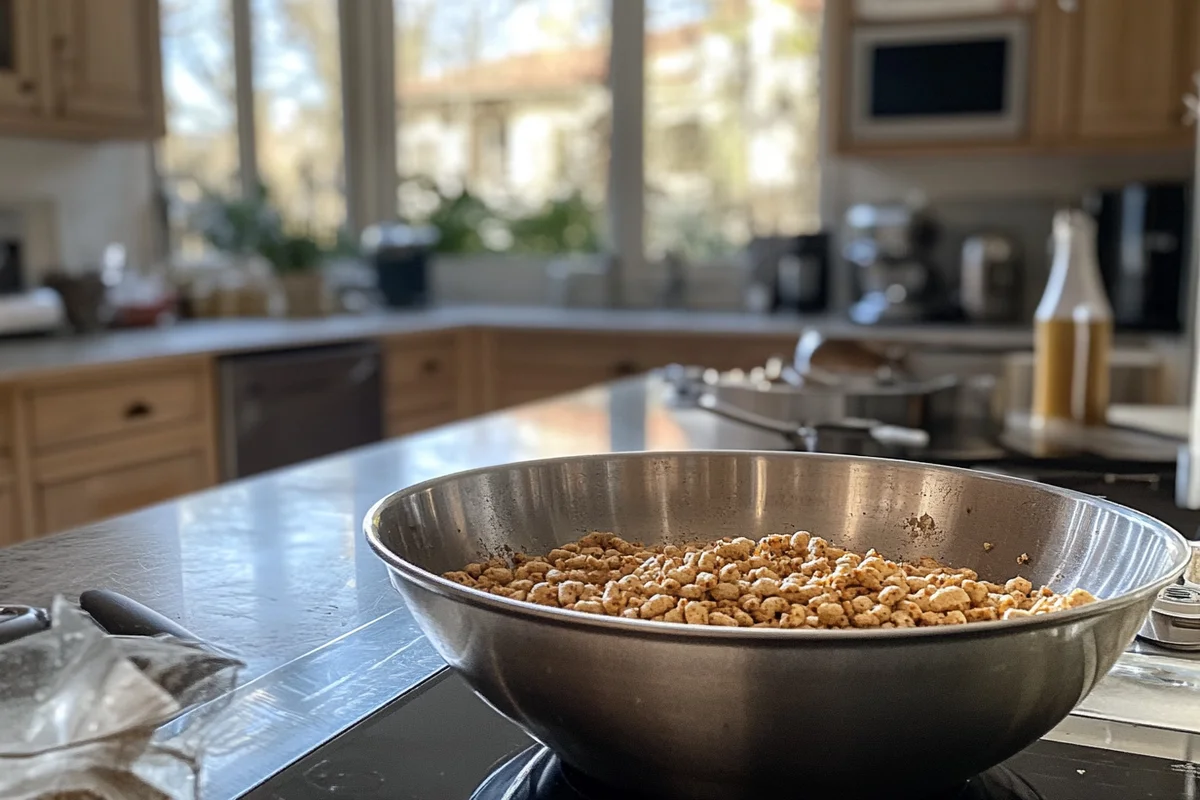
Is Chex Mix Healthy or Unhealthy? A Detailed Nutritional Analysis
Chex Mix, the classic snack mix with its blend of crunch, flavor, and variety, has been a pantry staple for decades. But as its popularity grows, so do questions about its health implications. Is it a nutritious snack option or just another processed food that should be avoided? This article explores the ingredients, nutritional benefits, and drawbacks of Chex Mix to provide a clear answer. Let’s dive in!
Part 1: Understanding Chex Mix
What Is Chex Mix?
Chex Mix is a versatile snack combining different types of Chex cereals—Corn Chex, Wheat Chex, and Rice Chex—with pretzels, nuts, and savory seasonings. Known for its delightful crunch and salty-sweet flavor combinations, it’s a popular choice for parties, road trips, and even quick munching sessions at home.
This iconic mix stands out because of its variety; every handful delivers a slightly different texture and flavor. It’s also available in numerous varieties, from the Traditional Chex Mix to bold and sweet flavors like Cheddar or Muddy Buddies. Despite its convenience and taste, though, questions linger about its nutritional value.
Popularity and Consumption
The appeal of Chex Mix lies not only in its taste but also in its adaptability. You’ll find people enjoying it as a snack, offering it at gatherings, or incorporating it into recipes for added crunch. Homemade versions are also common, with families tweaking the ingredients to match their preferences.
However, this convenience often comes with trade-offs. As with many packaged snacks, it’s important to balance convenience with healthfulness. This mix of cereals, fats, and additives can have varying impacts on your health depending on the serving size and flavor chosen. Let’s explore whether it’s a good addition to your diet or something to limit.
Part 2: Nutritional Breakdown of Chex Mix

Nutritional Profile
Chex Mix has an intricate nutritional profile, which depends largely on its flavor variety. The Traditional Chex Mix is a blend of carbs, fats, and proteins, with moderate calories and some micronutrients. However, while it may provide quick energy, there’s more beneath the surface to consider.
For a standard serving size of 1 cup (approximately 30g), Chex Mix typically contains:
- Calories: Around 120–140
- Carbohydrates: 20g
- Proteins: 2–3g
- Fats: 3–5g
- Sodium: 200–300mg
While the calories and carbs might seem moderate, the sodium content stands out, especially for those watching their salt intake.
Macronutrients
Carbohydrates
Chex Mix is primarily a carbohydrate-heavy snack, derived from cereals like Rice Chex and Corn Chex. While carbs are a good source of energy, the processed nature of these cereals means they lack the complexity and sustained energy that whole foods offer.
Proteins
Although it contains some protein, usually from nuts or seeds (if included), the amount is relatively minimal. It’s not sufficient to make Chex Mix a substantial protein source.
Fats
The fat content varies depending on the variety. Sweet flavors often have higher fat due to added oils or chocolate, while savory options like the Traditional Chex Mix rely on vegetable oils for roasting.
Micronutrients
Vitamins
Some varieties of Chex Mix may include fortified cereals, offering small amounts of B vitamins or folate. However, the overall contribution is modest compared to whole foods like fruits or vegetables.
Minerals
The snack mix provides some iron and magnesium, but its sodium content is significantly high. Consuming too much sodium can lead to health issues such as hypertension, so moderation is key.
Balancing Nutrition with Indulgence
For those who love Chex Mix but want to ensure it fits into a healthy diet, understanding its nutritional breakdown is vital. Limiting portions and opting for varieties with less sodium and sugar can help you enjoy it without overindulging. Additionally, pairing Chex Mix with nutrient-dense snacks like fresh fruits or veggies can balance out its nutritional gaps.
Part 3: Ingredients Analysis
Key Ingredients in Chex Mix
The foundation of Chex Mix lies in its ingredients, which range from cereal grains to seasonings. While the base is often nutrient-rich, the additives and processing methods may diminish its health value. Let’s take a closer look at the main components.
Cereals Used
- Wheat Chex: Made from whole grain wheat, Wheat Chex provides some fiber and vitamins. However, its processed nature means it lacks the full benefits of unrefined grains.
- Corn Chex: Corn-based and gluten-free, this cereal contributes carbs and a mild crunch. Unfortunately, its refinement strips away most of the natural fiber.
- Rice Chex: Light and crisp, Rice Chex is low in fiber and nutrients but adds texture to the mix.
Each cereal type in Chex Mix brings variety but also raises questions about how refined grains might affect your health when consumed in excess.
Additives and Preservatives
Chex Mix isn’t just about cereal—it’s the additives and preservatives that lend its signature taste and extended shelf life. These ingredients deserve scrutiny:
Salt and Sodium Content
Salt is a key ingredient in Chex Mix, enhancing flavor but also driving its high sodium levels. Regularly eating high-sodium foods can lead to water retention, bloating, and long-term health risks like high blood pressure.
Sugars and Sweeteners
Some varieties, particularly sweet ones like Muddy Buddies, include added sugars or syrups. Excess sugar consumption is associated with weight gain, increased risk of diabetes, and energy crashes.
Artificial Flavors and Colors
Many flavors of Chex Mix include artificial ingredients for taste and color. While the FDA generally regards these as safe, overconsumption can contribute to health concerns for sensitive individuals, such as headaches or allergies.
Homemade vs. Packaged Chex Mix
Making Chex Mix at home gives you full control over the ingredients, allowing for healthier substitutions like low-sodium seasonings or natural sweeteners. Homemade versions also avoid preservatives, providing a fresher and potentially healthier alternative.
Making Ingredient Choices That Align With Your Goals
Understanding what goes into Chex Mix is crucial for mindful snacking. Opting for varieties with simpler ingredient lists or creating your own mix at home can help you enjoy this popular snack while minimizing health risks.
Part 4: Health Benefits of Chex Mix
Potential Health Benefits
Despite its reputation as a processed snack, Chex Mix does have some redeeming qualities. Let’s explore how certain ingredients and components of this popular mix can contribute positively to your diet when consumed in moderation.
Whole Grains and Fiber
Some varieties of Chex Mix contain whole-grain cereals, such as Wheat Chex, which provide dietary fiber. Fiber plays a vital role in maintaining digestive health, regulating blood sugar levels, and promoting satiety. Although the fiber content may not be substantial in every serving, it can still complement a fiber-rich diet.
Protein Content
Nuts, seeds, or other added components in specific Chex Mix varieties contribute a modest amount of protein. Protein is essential for building and repairing tissues, maintaining muscle mass, and keeping you fuller for longer. While Chex Mix isn’t a primary protein source, its inclusion in a balanced snack can offer some benefit.
Presence of Essential Vitamins and Minerals
- Iron: Fortified cereals used in Chex Mix can provide small amounts of iron, which is essential for transporting oxygen in the blood and preventing anemia.
- Magnesium: Some mixes that include nuts offer magnesium, a mineral important for nerve function and energy production.
Snack Variety and Portion Control
Chex Mix’s variety—offering both crunchy and savory elements—can make it a satisfying snack option. When consumed in controlled portions, it can help curb cravings and prevent overeating compared to single-texture snacks.
Part 5: Health Concerns Associated with Chex Mix

Potential Health Drawbacks
While Chex Mix offers certain benefits, its drawbacks can’t be overlooked. The snack’s processed nature, combined with added fats, sodium, and sugars, can pose challenges for those aiming to maintain a healthy diet.
High Sodium Levels
One of the most significant concerns with Chex Mix is its sodium content. A single serving can contain 200–300mg of sodium, which is about 10–15% of the recommended daily intake for most adults. Consuming too much sodium can lead to:
- Increased blood pressure
- Risk of cardiovascular disease
- Fluid retention and bloating
This makes portion control especially critical if Chex Mix is part of your snack routine.
Added Sugars
Sweet flavors like Muddy Buddies contain added sugars, which can spike blood sugar levels, lead to energy crashes, and contribute to weight gain. Excess sugar intake is also linked to a heightened risk of developing type 2 diabetes and other metabolic disorders.
Presence of Unhealthy Fats
The oils used to roast Chex Mix or bind sweet flavors often include partially hydrogenated oils, which may contain trans fats. Even if trans fats are absent, high levels of refined oils can still contribute to inflammation and other chronic health conditions when consumed excessively.
Artificial Additives and Preservatives
To extend its shelf life and enhance flavor, Chex Mix often relies on preservatives and artificial flavors. While generally deemed safe in small amounts, excessive consumption of these chemicals can sometimes lead to:
- Allergic reactions
- Gastrointestinal discomfort
- Possible long-term health risks (for sensitive individuals)
Balancing Health Risks
Understanding these drawbacks doesn’t mean you need to avoid Chex Mix entirely. Instead, focus on moderation and mindful eating. Opt for smaller portions or choose varieties with lower sodium and sugar content. Alternatively, try making a homemade version with healthier ingredients to eliminate unnecessary additives.
Part 6: Comparing Chex Mix Varieties
Different Flavors and Their Health Implications
Chex Mix is celebrated for its diverse flavor offerings, each catering to different taste preferences. However, these varieties vary significantly in nutritional content, making some options more health-conscious than others.
Traditional Chex Mix
The classic blend of cereals, pretzels, and rye chips is among the better options nutritionally. It’s relatively low in sugar but still contains high sodium levels. A single serving provides:
- Moderate calories (120–130 kcal)
- 200–250mg sodium
- 20g carbs
This is a reasonable choice if you practice portion control.
Cheddar Chex Mix
Cheddar Chex Mix features a bold, cheesy flavor that’s undeniably addictive. However, the cheese seasoning contributes additional sodium and artificial additives. It’s worth noting that cheddar flavors generally have slightly higher fat content due to added oils.
Bold Party Blend
Packed with stronger seasonings, the Bold Party Blend is loved for its savory and zesty taste. Unfortunately, the intense seasoning equates to even higher sodium levels—up to 300mg per serving. This variety is best consumed sparingly.
Sweet Varieties (e.g., Muddy Buddies)
Sweet options like Muddy Buddies or Chocolate Chex Mix come with a significant sugar boost. While they satisfy sweet cravings, they:
- Contain higher calories (140–160 kcal per serving)
- Feature added sugars (up to 10g per serving)
- Offer minimal nutritional benefits
These are among the least health-friendly varieties and should be occasional treats rather than regular snacks.
Choosing the Healthiest Option
When selecting a Chex Mix variety, look at the nutrition label. Opt for:
- Lower-sodium options
- Varieties without added sugars
- Whole-grain versions
By comparing flavors and nutritional content, you can align your choice with your dietary goals, enjoying the snack without compromising your health.
Part 7: Recommendations for Healthier Consumption
Tips for Including Chex Mix in a Balanced Diet
Chex Mix can fit into a healthy lifestyle when consumed mindfully. By making smarter choices, you can enjoy this snack without jeopardizing your health goals. Here are some practical recommendations.
Portion Control
One of the easiest ways to mitigate the health concerns of Chex Mix is to control your portion size. A typical serving is around 1 cup (30g), but it’s easy to eat several servings in one sitting. To prevent overindulging:
- Pre-portion your servings into small snack bags.
- Avoid eating directly from the bag or bowl.
- Pair Chex Mix with nutrient-dense foods, like fruits or veggies, to increase satiety.
Choosing Healthier Varieties
Not all Chex Mix flavors are created equal. Select varieties with:
- Lower sodium content (200mg or less per serving).
- Minimal added sugars (less than 5g per serving).
- Ingredients that include whole grains and fewer artificial additives.
The Traditional Chex Mix is generally a safer option compared to the sweeter or more heavily seasoned varieties.
Making Homemade Chex Mix with Healthier Ingredients
A homemade version allows you to skip unhealthy additives and customize ingredients to suit your dietary needs. Consider these healthy swaps:
- Use low-sodium or no-salt seasonings.
- Incorporate healthy fats, like olive oil or avocado oil, instead of refined vegetable oils.
- Add nutrient-rich extras, like nuts, seeds, or roasted chickpeas.
- Limit sweeteners by using natural alternatives, like a drizzle of honey or maple syrup.
Homemade Chex Mix also gives you control over the roasting process, ensuring a fresher, tastier, and healthier snack.
Balancing Snacks in Your Diet
Chex Mix should be seen as an occasional treat rather than a daily staple. Pairing it with fresh produce or using it as a topping for soups or salads can stretch its flavor impact while keeping overall consumption moderate.
By following these tips, you can indulge in Chex Mix while staying aligned with your health objectives. Whether store-bought or homemade, the key lies in mindful eating and ingredient awareness.
Part 8: Frequently Asked Questions (FAQs)
Is Chex Mix a Healthy Snack Option?
Chex Mix can be a part of a balanced diet when consumed in moderation. The key is choosing healthier varieties and watching your portion size. Opt for the Traditional Chex Mix or make a homemade version to avoid excessive sodium and added sugars.
Can Chex Mix Be Part of a Weight Loss Diet?
Yes, but portion control is crucial. Stick to a single serving (around 30g) and avoid high-calorie flavors like Muddy Buddies. Pair it with nutrient-dense foods like fruits or veggies to feel fuller without adding too many calories.
Are There Gluten-Free Options for Chex Mix?
Yes! Chex Mix offers gluten-free varieties made with Corn Chex or Rice Chex. Always check the packaging to ensure the specific flavor meets gluten-free requirements, as cross-contamination may occur.
How Does Chex Mix Compare to Other Snack Foods?
Compared to chips or candy, Chex Mix can be a slightly healthier option, especially the Traditional variety. However, it still contains sodium, processed grains, and sometimes added sugars, so moderation is essential.
What Are Healthier Alternatives to Chex Mix?
Homemade trail mix, air-popped popcorn, or roasted chickpeas are excellent alternatives. They provide more nutrients, less sodium, and fewer artificial additives than store-bought Chex Mix.
How Often Is It Safe to Consume Chex Mix?
Occasional consumption is best. A few times a month as part of a balanced diet is unlikely to cause health issues. Daily consumption, however, could lead to excessive sodium and calorie intake, increasing the risk of health problems.
These FAQs provide quick answers to the most common questions about Chex Mix and its role in a healthy diet. By being mindful of the key factors discussed throughout this article, you can make informed decisions about how often and which variety to enjoy.
Part 9: Summarizing the Health Aspects of Chex Mix
Chex Mix holds a special place in the world of snacks, offering a flavorful mix of crunchy and savory elements. While it provides some nutritional benefits, such as whole grains, fiber, and modest protein, its high sodium content, added sugars, and artificial additives make it less ideal for regular consumption.
Key Takeaways:
- Chex Mix is best enjoyed in moderation. Practicing portion control and pairing it with nutrient-dense foods can minimize health risks.
- Opt for healthier varieties, such as the Traditional Chex Mix, or experiment with homemade recipes to reduce unhealthy ingredients.
- Understand its nutritional profile and potential health concerns, such as high sodium and refined grains, to make informed snacking choices.
By striking a balance between indulgence and nutrition, Chex Mix can still be a satisfying part of your snack rotation. Whether store-bought or homemade, this versatile mix can align with your dietary goals when consumed thoughtfully.

